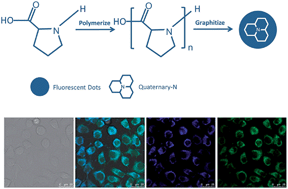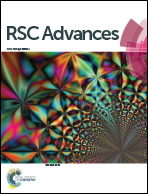Water-dispersible, pH- and ultralong stable, biocompatible, and highly luminescent graphite-like poly(l-proline) dots: a cytoplasm staining reagent†
Abstract
Water-dispersible, ultralong and pH-stable, and highly luminescent graphite-like poly(L-proline) dots (GPP-dots) were synthesized using the biomolecule L-proline as the monomer. The obtained dots were applied to the cytoplasm staining of CBRH7919 cells and showed good biocompatibility and could act as an excellent bioimaging reagent. More importantly, using an unconjugated-structured monomer to prepare a fluorescent polymer via graphitizing provides a diverse outlook for the fabrication of fluorescent polymer dots.


 Please wait while we load your content...
Please wait while we load your content...